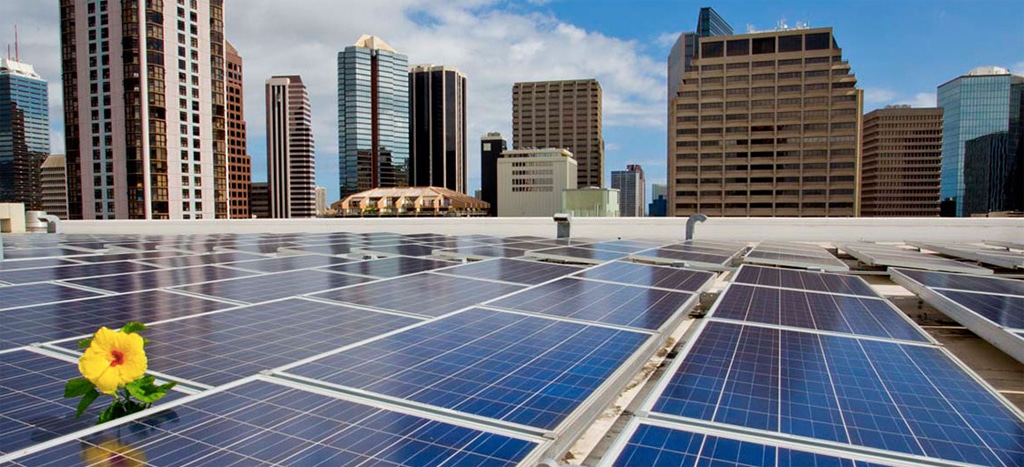Community solar is increasingly spreading across the United States, as regulators and utilities increasingly see it as a means to meet both greenhouse gas reduction goals and customer demand for renewables. And while actual deployment is lagging policy action, the gears are being put in motion in more and more states.
As the latest example, on the Friday before Christmas the Hawaii Public Utilities Commission (HPUC) issued an order that sets the outlines of a community shared renewable energy program for the Hawaiian Electric Companies (HECO), whose utility subsidiaries provide electricity for all of the main islands in the state except Kaua’i.
The order sets broad outlines on island-specific capacity allocations, credit rates and project sizes, and also gives indications that HPUC will push HECO to adopt a larger and more aggressive program than the company has proposed.
The program is being driven by legislation passed in 2015, and it appears that in the interim HECO has been dragging its feet. This is evidenced by the company’s proposal for a meager 1.5 MW initial program capacity, which would be enough to serve only 440 customers.
Instead, HPUC ordered HECO to deploy 8 MW of community solar across all islands in an initial one-year phase, including 5 MW on Oahu alone. After the first phase the program will be re-evaluated for future phases, including working out the details of the credit system. HPUC also states that a function of this first phase will be to give HECO time to work out the kinds of automated crediting and successful customer service implementation.
The first phase will have flat rates, with HPUC setting these at $0.15-$0.26 per kilowatt-hour (kWh). Oahu and the island of Hawaii will be set at the $0.15/kWh rate. Over the longer term HPUC has expressed that it wants price signals to better align renewable energy output to times when it is most valued by and useful to the energy network, and also for such facilities to provide and be paid for grid support services.
“This phased approach should allow for expedient program implementation while providing an opportunity to adjust future phases based on experience and market trends,” notes HPUC in the order. “It also provides that pricing may be updated to reflect fair market rates.”
In phase 2, HPUC says that it wants HECO to “expedite basic functionality and materially expand program capacity”, and envisions 64 MW of community renewable energy capacity, broken down into “standard”, “peaker” and “utility” categories.
The 30 MW of “standard” facilities will be third-party owned, as opposed to 9 MW of “utility”, which will be owned by the utility, however at least half of the latter category will need to be dedicated to low-to-moderate income customers.
As for the 25 MW of “peaker” renewables, these will need to deliver at least 85% of their electricity during on-peak hours. As the peak in most places falls in the late afternoon to evening, it is likely that this 25 MW will need to be some technology other than solar PV.
The next step will be for the HECO companies to produce pricing schedules and related program filings by the end of February. The Kaua’i Island Utility Cooperative is working on a separate program, but will also be required to submit customer tariffs and filings for its program to move forward.
This content is protected by copyright and may not be reused. If you want to cooperate with us and would like to reuse some of our content, please contact: editors@pv-magazine.com.









By submitting this form you agree to pv magazine using your data for the purposes of publishing your comment.
Your personal data will only be disclosed or otherwise transmitted to third parties for the purposes of spam filtering or if this is necessary for technical maintenance of the website. Any other transfer to third parties will not take place unless this is justified on the basis of applicable data protection regulations or if pv magazine is legally obliged to do so.
You may revoke this consent at any time with effect for the future, in which case your personal data will be deleted immediately. Otherwise, your data will be deleted if pv magazine has processed your request or the purpose of data storage is fulfilled.
Further information on data privacy can be found in our Data Protection Policy.